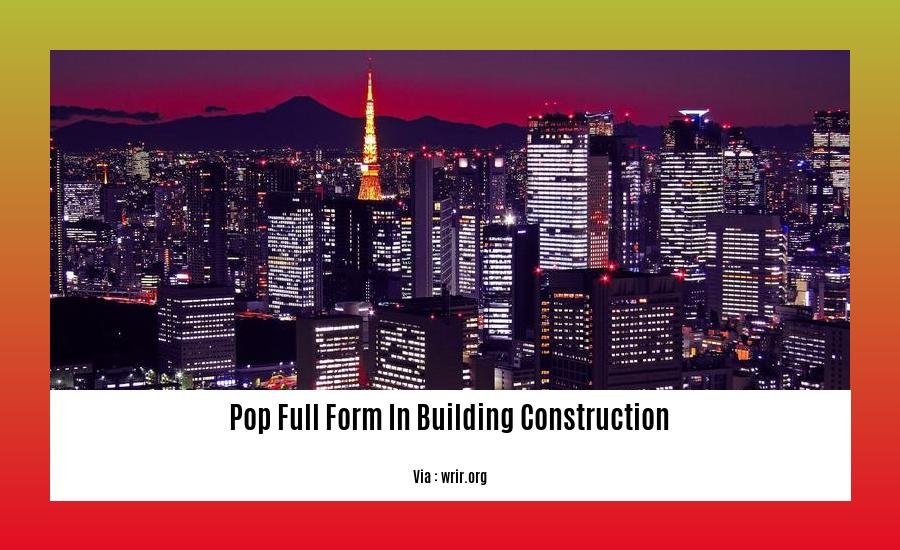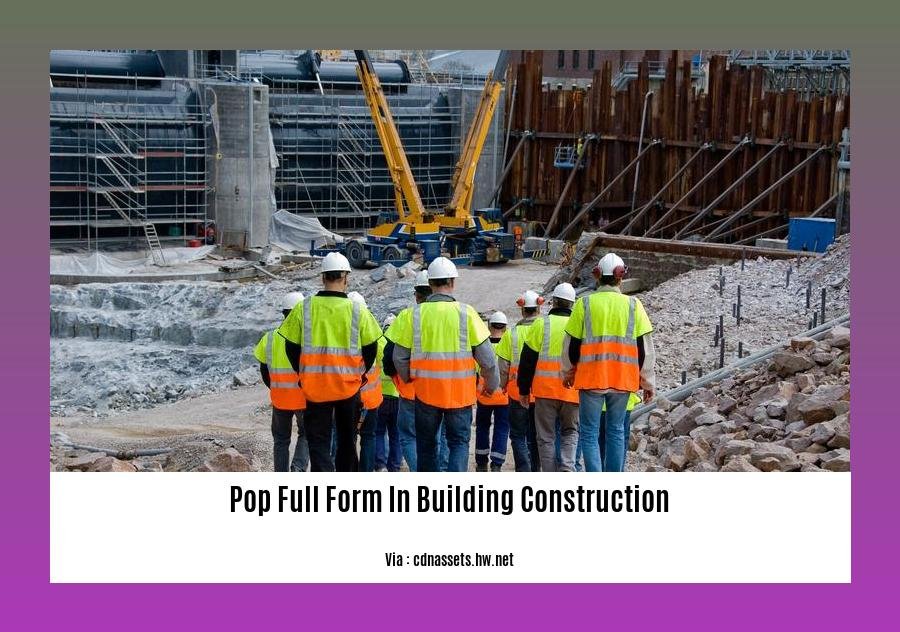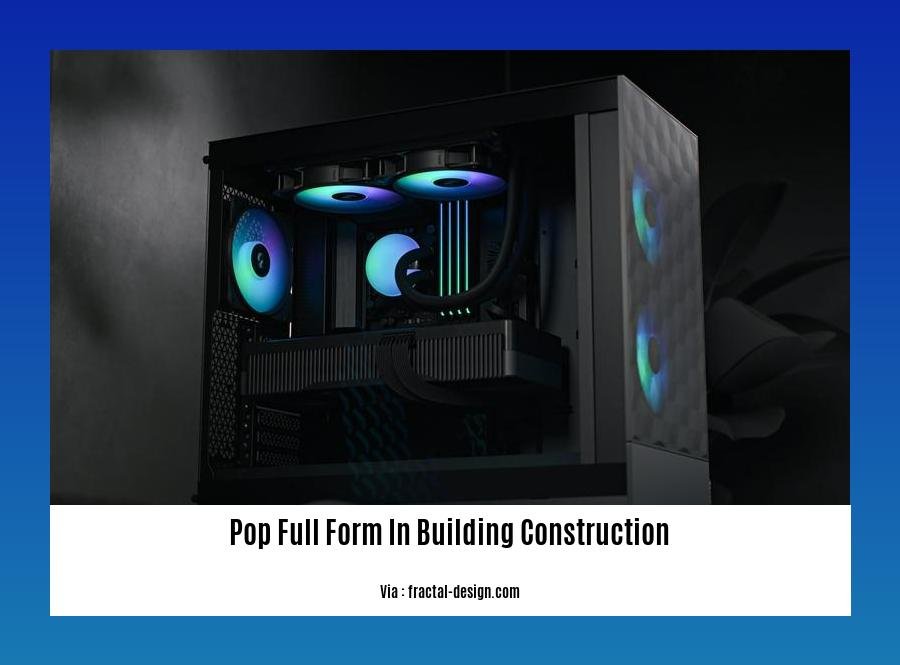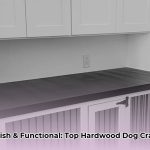Dive into the world of POP (Plaster of Paris) in building construction! This versatile and affordable material has a rich history and offers numerous advantages for a wide range of applications, including decorative moldings, intricate designs, and durable repairs. However, it also has some limitations to consider. In this article, we’ll explore the POP full form, its characteristics, advantages, and disadvantages to provide you with a comprehensive understanding of this essential construction material.
Key Takeaways:
- Plaster of Paris (POP) is a building material made of gypsum, used for coating walls and ceilings.
- Advantages include quick hardening, smoothing surfaces, decorative molding, and affordability.
- Applications range from coatings to architectural designs and mold making.
- Alternatives to POP include gypsum board, wall putty, and cement plaster.
- Lifespan depends on material quality and conditions, but proper application and maintenance enhance durability.
POP Full form in Building Construction

What is Plaster of Paris (POP)?
In the world of building materials, Plaster of Paris (POP) stands out as a versatile and widely used substance. Derived from gypsum, a natural mineral, POP is renowned for its quick-hardening properties and smooth, even finish.
Benefits of POP in Construction:
-
Time-Saving: POP’s rapid hardening time makes it ideal for projects where timely completion is crucial.
-
Smooth Finish: It effectively smooths out uneven surfaces, providing an excellent base for paint or other decorative finishes.
-
Versatile: POP’s ability to be molded into intricate shapes allows for artistic designs and architectural details.
-
Cost-Effective: Compared to other building materials, POP is a cost-friendly option for both residential and commercial projects.
Applications of POP:
POP finds its place in various construction applications, including:
- Wall and ceiling coatings
- Architectural embellishments
- Casts and molds
Alternatives to POP:
While POP is widely used, alternative options are available, such as:
-
Gypsum Board: Similar to POP, gypsum board offers a smooth surface but requires additional framing and installation.
-
Wall Putty: A fine paste used to fill small holes and smooth surfaces before painting.
-
Cement Plaster: A durable and long-lasting material often used for exterior walls and structural applications.
Lifespan of POP:
The longevity of POP depends on factors like material quality and environmental conditions. With proper application and maintenance, it can last for several years.
Remember: When it comes to POP full form in building construction, think of it as the go-to material for quick and smooth finishes, decorative designs, and cost-effective solutions.
Are you working in the construction industry and need to find out the Pop full form in construction? This article will provide you with the information you need to know.
Advantages of POP

Are you a building professional looking to understand the benefits of Plaster of Paris (POP)? If so, let’s dive into its advantages and see why it’s a popular choice in construction.
Lightweight and Durable
POP is incredibly lightweight, making it easier to handle and install. Despite its lightness, it’s remarkably durable, providing strength and resistance to wear.
Low Thermal Conductivity
POP boasts low thermal conductivity, acting as an excellent insulator. It helps maintain a comfortable indoor temperature by reducing heat loss.
Fire Resistance
When exposed to fire, POP doesn’t ignite or release harmful fumes. Its fire-resistant properties make it a safe choice for various applications.
Heat Insulating
POP’s insulating qualities help regulate indoor temperatures. It prevents overheating in summer and heat loss in winter.
Minimal Shrinkage During Setting
Unlike other materials prone to shrinkage during curing, POP minimizes shrinkage, reducing cracking and ensuring a smooth finish.
Impact-Resistant Surface
The plaster forms a thick, impact-resistant surface that can withstand everyday wear and tear, making it suitable for high-traffic areas.
Easy to Mix and Spread
POP is a versatile material that’s easy to mix and apply. It can be spread evenly, creating a smooth and professional finish.
Excellent Adhesion to Fibrous Materials
POP adheres exceptionally well to fibrous materials, making it an ideal choice for plastering drywall, wood, and other fibrous surfaces.
Key Takeaways:
- Lightweight and durable construction material
- Low thermal conductivity, providing insulation
- Fire-resistant properties for safety
- Heat insulating qualities for temperature regulation
- Minimal shrinkage, reducing cracking
- Forms an impact-resistant surface
- Easy to mix and spread
- Excellent adhesion to fibrous materials
Citations:
– What is POP? Advantages & Disadvantages of Plaster of Paris
– What Is Pop in Building Construction?
Disadvantages of POP
Plaster of Paris (POP) is an important building material, but it has some Disadvantages:
-
Time-consuming installation: POP requires a multi-step application process that includes mixing, applying, and smoothing, making it more time-consuming than other materials.
-
Skilled labor: POP installation requires semi-skilled laborers and skilled artisans to ensure proper blending and application, increasing the cost and complexity of the process.
-
Inferior strength: POP has lower strength compared to gypsum plasterboard, making it more susceptible to cracking and damage over time.
Key Takeaways:
- POP installation is time-consuming due to its multi-step application process.
- Skilled labor is necessary for proper blending and application of POP.
- POP has lower strength compared to gypsum plasterboard, making it more prone to damage.
Citations:
- Advantages and Disadvantages Of Plaster of Paris – Trimurti Products
- Advantages and Disadvantages of POP vs. Gypsum Ceilings – Gyproc
FAQ
Q1: What is the full form of POP in construction?
A1: POP stands for Plaster of Paris, a building material derived from gypsum, widely used for coating walls, ceilings, and creating architectural designs.
Q2: What are the key characteristics of POP?
A2: POP is lightweight, durable, fire-resistant, and heat insulating. It has a low thermal conductivity and minimal shrinkage during setting.
Q3: What are the advantages of using POP in construction?
A3: POP offers several advantages, including its ability to harden quickly, providing a smooth base for finishes, and its adaptability for intricate designs. It is also relatively inexpensive.
Q4: What are the disadvantages of using POP in construction?
A4: POP has some disadvantages, such as its vulnerability to moisture, as it can soften and deteriorate over time. Additionally, it requires skilled professionals for proper application.
Q5: What are the alternatives to POP in construction?
A5: Alternatives to POP include drywall, wall putty, and cement plaster. These materials offer different properties and installation requirements, depending on the specific application and desired results.
- NYT Connections Answer: Hedgehog, Pineapple, Cactus The Spiky Things Explained - April 20, 2025
- How to Clean a Wool Carpet: A Comprehensive Guide - April 20, 2025
- How to Clean a Pleather Couch: A Complete Guide - April 20, 2025










